Enclosed Spaces: Engineering Solutions
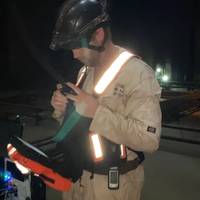
If you think the human element is the only cause of enclosed space deaths, think again.Enclosed space incidents are cited as the largest cause of on-duty fatalities in commercial shipping. The risks can’t simply be engineered out, but there’s a powerful coalition wanting action nonetheless.There’s a tendency to blame failure to follow procedures, they say. Investigations seldom focus on the practicality of those procedures or the influence of the operating environment and vessel design, they say.
Thoma-Sea Awarded Contract to Build Two NOAA Research Ships
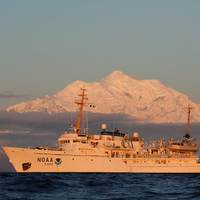
Houma, La. shipbuilder Thoma-Sea Marine Constructors has been awarded a contract to design and build two new research vessels for NOAA, for expected delivery in 2027 and 2028.The $624.6 million deal was awarded following a request for proposals that was open June–October 2022 and includes purchase options for up to two more vessels.The new ships will be less than 90 meters long, engineered to focus primarily on ocean mapping and nautical charting as part of NOAA’s mission to deliver tools and information to help mariners safely navigate the nation’s ports and harbors.
BAE Systems Builds RIBs for Trinidad and Tobago Patrol Ships

BAE Systems has been awarded a contract worth almost £2 million ($2.5 million) to provide six Pacific 24 (P24) rigid inflatable boats (RIBs) to Austal, based in Australia. The RIBs, built and customized in BAE Systems’ Boats factory in Portsmouth, U.K. are being supplied to Austal to equip two Cape-class Patrol Boats under construction for the Trinidad and Tobago Coast Guard.The P24 is a small and agile boat that can be deployed for a variety of tasks from counter-piracy and counter-narcotics missions, to force protection, rescue and logistics operations.
The Path to Zero: Creating a Pathway to Carbon-Negative Shipping
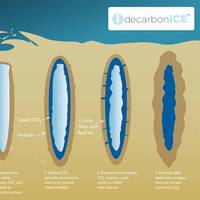
Greenhouse gas emissions capture and storage may be a more practical alternative to emissions reduction for meeting the IMO’s 2050 CO2 target. Tom Mulligan reports.Shipping emits close to 1 billion tons of CO2 each year and the shipping industry needs carbon-free solutions to achieve the IMO’s 2050 target of a 50 percent reduction, compared to the 2008 level, in these massive emissions. However, according to Denmark’s Maritime Development Center, while better technical and operational solutions must continue to be pursued…
DecarbonICE Project for Green Shipping
A group of world leading shipping companies including NYK, Sovcomflot, Knutsen OAS and Ardmore, ship builders, including DSME and the mining company Vale, have therefore teamed up with Denmark based Maritime Development Center to develop such an on-board carbon capture and storage solution in a project named decarbonICE.DecarbonICE is based on two new main ideas for the capture and storage part, respectively. The CO2 and other GHG's in the ship exhaust are captured on board in a cryogenic process and turned into dry ice.Proven offshore technology is then applied during normal ship operations to transport the dry ice into the seafloor sediments.
USCG PSC Equals meaningful Polar Presence
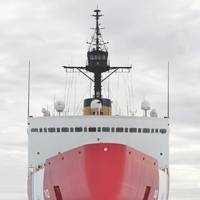
The Coast Guard needs a ship that can do more than just break ice; it needs a multi-mission ship to provide for the nation’s security, asserting its sovereign rights, and protecting its long-term economic interests. That ship is the Polar Security Cutter.Since Russia cashed the check in 1867 for the purchase of Alaska the U.S. has been an Arctic nation. Today, it is one of eight countries that have territorial land or seas above the Arctic Circle or in the polar region (six of those countries have Arctic Ocean coastline or an exclusive economic zone above the Arctic Circle). The U.S.
The ABC’s of DP 101
Dynamic Positioning has been around for a while, it is evolving and it is here to stay. Here to sort it all out are two of industry’s more familiar stakeholders who also explain what might come next.When it comes to critical offshore operations and vessel handling, this is not your grandfather’s marine industry, and it hasn’t been for some time. That’s because the bridge layout and equipment commonly found on any recently delivered offshore service vessel would be unfamiliar to the typical deck officer of just 20 years ago. Much of that can be attributed to the advent of dynamic positioning equipment systems.DP – perhaps like no other skill at sea – has changed the role of the deck officer. The technical requirements to qualify and operate this equipment are vast.
Naval Architecture and Marine Engineering Tops for Jobs

The results of a recent survey conducted by financial services company Bankrate, LLC show that naval architecture and marine engineering take the top spot as the most valuable college degrees in which to major.A total of 162 degrees were covered in the company’s research. Drama and theater arts, on the other hand, were shown to be the least valuable degrees in terms of earning power after graduation. The survey revealed that the overall median income for those trained to build, design and maintain maritime vessels was $90,000 and that less than 2 percent of degree holders were unemployed.
Admiral Schultz Emphasizes Maritime as a Driver of U.S. Commerce
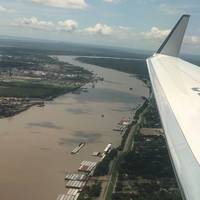
Last month Maritime Reporter & Engineering News was invited to join Admiral Karl Schultz, the Commandant of the United States Coast Guard, on a trek to New Orleans for an underway tour on board a mid-stream transfer operation in the Mississippi River. As the U.S. inland waterway system has endured historic water levels for more than six months, the destination provided a perfect backdrop to discuss several key messages coming from USCG leadership: the maritime industry’s critical role in facilitating U.S.
Greek Shipping Leaders Address Key Challenges
Leaders of the Greek Shipping Industry met to discuss decarbonization, capitalizing on data and digital technologies and vessel automation at the annual ABS Hellenic National Committee meeting.“We have deep relationships across the Greek shipping industry, which reflects our extensive investment in serving the needs of ship owners and operators here. Not only is our office in Piraeus the largest ABS office in Europe, but it is home to our Global Ships Systems Center and an extensive team of experts on call 24 hours a day to assist with whatever challenges they face,” said Christopher J. Wiernicki, ABS Chairman, President and CEO, who actively participated in the Committee program.ABS…
Denmark Adopts New Strategy for Cyber Security
The Danish Ministry of Industry, Business and Financial Affairs has launched a new sectoral strategy for the shipping industry. The strategy is a part of the Danish government’s national strategy for cyber and information security.The strategy contains a number of initiatives aimed at strengthening IT security and preventing cyber threats in the maritime sector, according to a press release from Danish Maritime Authority (DMA).The objective of the strategy is to ensure that safety in Danish waters and on board Danish ships is not compromised by cyber attacks.The responsibility for cyber and information security in the maritime sector lies with the Danish Maritime Authority.
Finland: A Hot-Bed of ICEBREAKER Technology
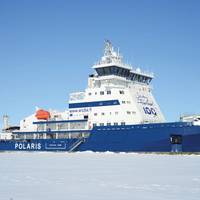
Finland is a traditional marine tech hub, with almost 90 company members in the Finnish Maritime Industries association. While the country has a storied maritime history across many sectors, based on geographic locale, it’s Arctic and ice marine technology is second to none, and it’s hoping the U.S. Coast Guard is taking notice.The Finnish maritime industry is hoping to get involved in developing the new icebreakers for the U.S. Coast Guard polar icebreaker program. Ulla Lainio…
Saudi Military Industries Signs Warships JV with Navantia
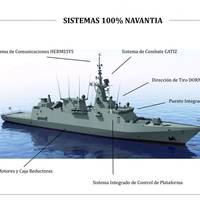
State-owned Saudi Arabian Military Industries (SAMI) signed an agreement with Spain's Navantia to set up a joint venture in the kingdom to build five warships, the state news agency SPA reported on Thursday.The deal is part of a wider framework agreed in April by Spain and Saudi Arabia for Spanish state-owned shipbuilder Navantia to supply warships to the Gulf Arab state under a deal estimated to be worth around 1.8 billion euros ($2.2 billion).SPA said the agreement between SAMI…
IBIA Promotes Sensible Approach to Sulphur Testing
International Bunker Industry Association (IBIA) is continuing its efforts for IMO to adopt guidelines ahead of 2020 that will promote a uniform approach to fuel oil testing and reporting protocol for the verification of compliance with MARPOL Annex VI sulphur limits. Earlier this year, IBIA submitted two papers to the 5th session of the IMO’s Sub-Committee on Pollution Prevention and Response (PPR 5) proposing a way ahead on sulphur testing and compliance verification. Both papers will be forwarded to a PPR intersessional working group (ISWG) taking place at the IMO in July. In PPR 5/12/1, IBIA proposes establishing appropriate guidelines for verifying the sulphur content in fuel oil samples taken from ships’ fuel systems (in-use samples).
New Ships’ Routing Systems in Kattegat
The IMO NCSR Sub-Committee has approved the Danish Maritime Authority’s proposal for new ships’ routeing measures, thereby bringing new routes in the Skagerrak and the Kattegat one step closer and enhancing safety of navigation. Because of developments in shipping, the ships transiting these waters today are larger than those for which the routes were originally designed. Approx. 7,000 ships transit the Kattegat each year, the majority of which are deep-draught ships heading for or coming from the Baltic Sea. Consequently, there is a need to extend existing ships’ routes, thereby making it easier to keep the traffic separate in accordance with the largest water depths.
Tech File: Propelling Hybrid Electric Solutions
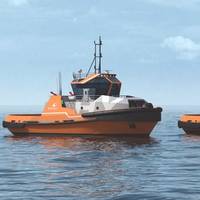
Growing interest in hybrid-electric power systems is expanding the search for new propulsion and energy-storage systems in the workboat sector, where compliance with emerging environmental regulations and a relentless pursuit of operational efficiency are driving change. To meet demands for cleaner more efficient power, owners are examining the potential for less conventional methods of energy generation and storage – such as fuel cells, lithium-ion batteries, super-capacitors, flywheels, wind and solar – to propel their vessels.
Tripartite Shipbuilding Forum Agrees on Goals
Carbon emissions, safety and cyber security were at the top of the agenda at the annual Tripartite Shipbuilding Forum which attracted more than 100 delegates. At the end of two days of debate it was agreed that the industry needs to design ships differently and be more technologically innovative to reach world climate goals and counter cyber security risks. For over 16 years, Tripartite has provided an opportunity for representative associations of shipowners, classification societies and shipyards to discuss contemporary issues related to design, construction and operation of new and future ships. This year’s themes were decarbonization of ships, safe design and digitalization.
KVH Debuts Connectivity as a Service Offering
KVH Industries, Inc. has launched a new all-inclusive Connectivity as a Service (CaaS) offering for the maritime industry, AgilePlans by KVH. For a single monthly fee, AgilePlans by KVH brings an advanced satellite communications solution onboard without a costly capital expenditure or long-term commitment. The subscription fee is as low as $499/month for a complete package including hardware, connectivity, installation at select ports, entertainment and training content and global support. The AgilePlans by KVH subscription model is designed to deliver everything a fleet needs for better communications and improved operational efficiency at sea.
Product Lifecycle Management for Shipbuilding
Tomorrow’s high tech fleets will depend on shipyards – long after the christening is over. Siemens PLM software makes that dream possible – today. According to global powerhouse Siemens, a major transformation is underway in the marine sector. As operators strive to develop more energy-efficient, reliable and environmentally friendly vessels that also lower operating costs, they will increasingly depend on shipyards to make that happen. That’s right: shipyards. Long after the vessel slides into the water and the christening party is but a distant memory, the clean and efficient workboat of tomorrow will leverage a wealth of data that the builder will manage. Before any of that happens, shipbuilders will also need to design and build ships faster and better than ever before.
Rolls-Royce Signs MoU to Develop Smart Ships
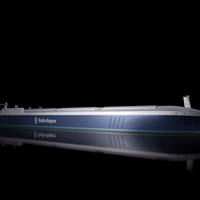
Rolls-Royce and the Technology Center for Offshore and Marine, Singapore (TCOMS) have signed a Memorandum of Understanding to form a strategic partnership to develop smart ship technologies. The partners will work on world leading research to develop fundamental technologies, such as smart sensing, digital twinning and integrated modelling which are essential to the development of future marine data based solutions. These developments will be applied to technology demonstrators to show how they can be used by specific ship types.
Future Unmanned Naval Systems for MMCM Program
Thales, BAE Systems and their partner SAAB, ECA Group and ASV Global welcome the confirmation by the Organization for Joint Armament Cooperation (OCCAR) that the UK Ministry of Defense (MOD) and French Defense Procurement Agency (DGA) will continue its collaboration for the combined United Kingdom and France MMCM (maritime mine counter measures) program. Initiated in 2010 under a cooperation agreement between France and the United Kingdom, the MMCM program develops a prototype autonomous system for detection and neutralisation of sea mines and underwater improvized explosive devices (UWIEDs). The agreement signed at Euronaval today between Harriet Baldwin…
IMO to Prevent Cyber-attacks
At a meeting of the IMO's Maritime Safety Committee (MSC), it was recognised that ships may also be exposed to so-called cyber-attacks. Now, the IMO wants to prevent hostile attempts to interfere with electronic systems in the maritime industry and it has therefore drawn up interim Guidelines on risk management. An important point of the guidelines is that potential attacks will not be aimed merely at traditional computer systems, but will also to a high degree focus on control and steering systems for, for example, navigation, machinery, communication, etc. The Maritime Safety Committee (MSC) has recognised that ships can also be exposed to hostile attempts to disturb or interfere with electronic systems, so-called cyber-attacks.
SUPSALV & Finding El Faro
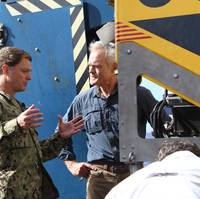
Last month we were offered an in-depth discussion on marine salvage with Captain Gregg W. Baumann, U.S. Navy, Director of Ocean Engineering, Supervisor of Salvage and Diving. Captain Baumann and his team have a long history regarding difficult missions accomplished, including most recently the location and filming of the lost TOTE containership El Faro. What is the scope of the responsibility of the Supervisor of Salvage & Diving; Director of Ocean Engineering? The responsibilities of the Supervisor of Salvage & Diving…







